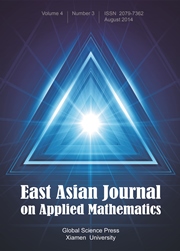Article contents
Integrating Feature Direction Information with a Level Set Formulation for Image Segmentation
Published online by Cambridge University Press: 27 January 2016
Abstract
A feature-dependent variational level set formulation is proposed for image segmentation. Two second order directional derivatives act as the external constraint in the level set evolution, with the directional derivative across the image features direction playing a key role in contour extraction and another only slightly contributes. To overcome the local gradient limit, we integrate the information from the maximal (in magnitude) second-order directional derivative into a common variational framework. It naturally encourages the level set function to deform (up or down) in opposite directions on either side of the image edges, and thus automatically generates object contours. An additional benefit of this proposed model is that it does not require manual initial contours, and our method can capture weak objects in noisy or intensity-inhomogeneous images. Experiments on infrared and medical images demonstrate its advantages.
Keywords
MSC classification
- Type
- Research Article
- Information
- Copyright
- Copyright © Global-Science Press 2016
References
- 3
- Cited by


